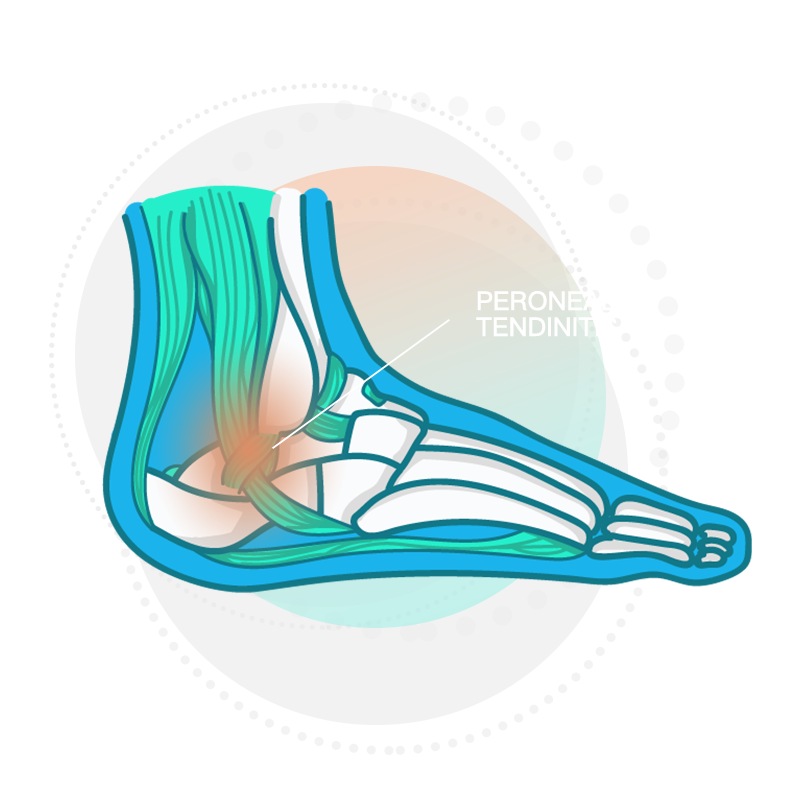peroneal tendinitis
What is Peroneal Tendinitis?
Peroneal tendinitis is another overuse injury causing inflammation on the oustide of the ankle. This inflammation affects the peroneal tendons that run alongside your ankle causing discomfort or pain.
Symptoms
Pain centred around outside of ankle and side of foot
Swelling of ankle and side of foot
Increased pain with activity, especially on uneven terrain forcing foot to pronate
Crunching or popping feeling when articulating foot
Pain subsides after activity ceases
Feeling of instability and lack of support in the ankle
Getting Tested
Testing for Peroneal Tendinitis requires a physical exam performed by a qualified physiotherapist. They should also send you to a physician to receive an X-ray, bone scan, and/or MRI to adequately determine your issue. A physical exam whereby the physiotherapist assesses your movement and pinpoints your sensitivity and pain via manipulation and touch can only go so far.
It is imperative you also scan the areas of concern as there could be additional causes for concern such as fractures, bone abnormalities, or tears.
Treatment
Treatment will depend on what the physiotherapist determines is the cause of your peroneal tendinitis. Typically, the root cause is poor biomechanics – you move poorly. Poor movement can be caused by terrain, equipment, or you.
If the source of the poor movement is equipment – you should be fitted with proper equipment. Whether your current equipment simply wore out over time or it was ill-fitting in the first place, you need new equipment to keep you moving right.
If the issue is with the terrain – your focus will be on strengthening your area of weakness to build up tolerance/resilience.
If the problem is you – your physiotherapist will work with you and potentially an exercise physiologist to correct your problematic movement.
In drastic cases where the tendon is torn or ripped, surgery may even be required to repair the damage. In some cases, bone augmentation may be necessary to provide additional room for the tendon to operate safely.
Regardless of the root cause – you will need to do mobility, range-of-motion, and strength training to help rehabilitate the injury.
Prevention
Prevention is really quite simple – stay strong and move well. Unlike Compartment Syndrome, MTSS, or Stress Fractures – Peroneal Tendinitis is usually a movement pattern issue. Sometimes it cannot be avoided depending on the activity you are doing or the terrain, which is where the strength training comes into play. By building up your overall strength and mobility, you will be able to move better and absorb impacts with less issue.
Start Healing
This is an informational website. This is not a replacement for proper medical care and attention by a registered physician. Please contact a sports medicine doctor or qualified physiotherapist in your area to undergo proper testing and diagnosis for your specific issues.

